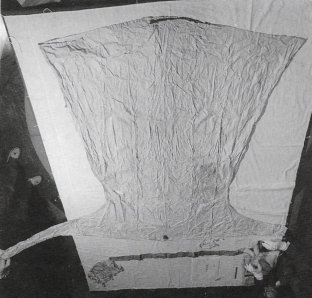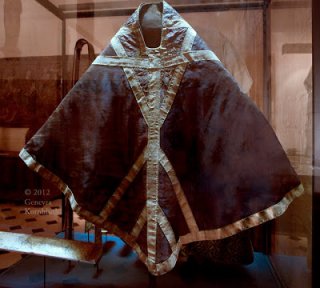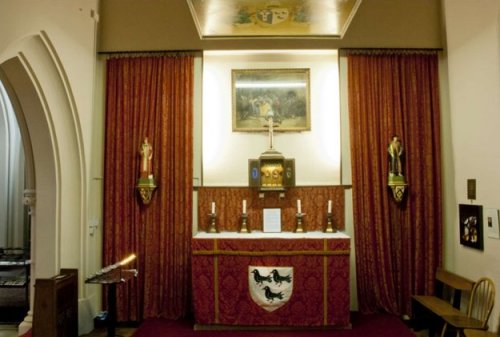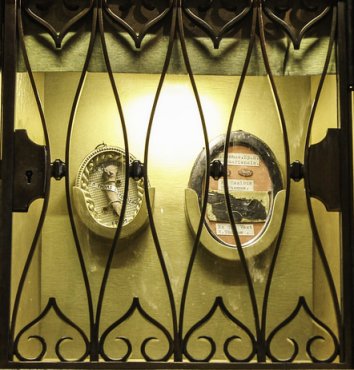Where is he now?
The traditional story is that they were burnt and the ashes cast into the wind, but there is no written evidence that this actually happened. Did the commissioners agree to a quiet reinterment, as long as a new shrine was not created? Did the monks, aware of what was about to happen, hide them, and slip some other bones in the shrine when no-one was looking?
These ideas and many more are explored in The Quest for Becket's Bones, by John Butler; a detective story that cannot, sadly, come to a firm conclusion. It is, however, an engrossing read. A set of bones were discovered in 1888, buried in the crypt very close to the original shrine. This caused much excitement at the time, and many were convinced that they were those of Becket, but later analysis has largely disproved this. A theory - almost a conspiracy theory - says that an inner circle in the cathedral hierarchy know where they are. The favourite location is shown below. It lies before the Chapel of the Magdalene, where a red light is continuously lit.

What happened to the Canterbury relics may be a mystery, but other relics claiming a Becket connection are widespread. The removal of the bones to the new shrine in 1220 was supervised by Archbishop Stephen Langton, and he passed on some items to some Italian cardinals who were in attendance. The church of Santa Maria Maggiore in Rome has a reliquary containing part of his shoulder, a piece of brain-case, some brain tissue and a long white shirt. The shirt is on the left below; perhaps mercifully, I do not have a photograph of the brain tissue. The church claims that the shirt has been 'scientifically proved' to have been that of Becket, though how that was done is not revealed. On the right below is a chasuble, said to have been Becket's, now in Sens Cathedral in France.



